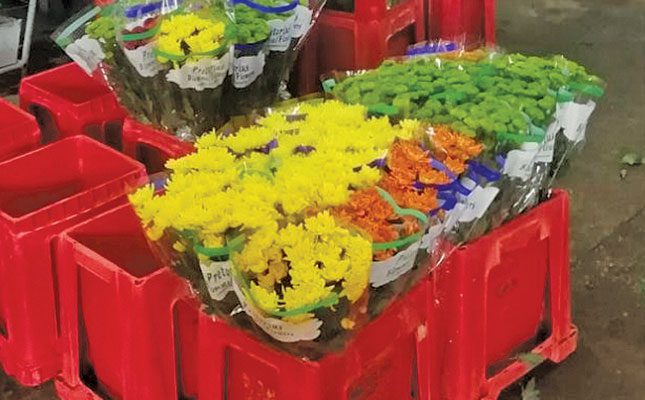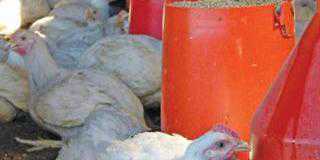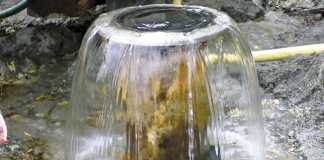
Photo: Wikimedia Commons
Three decades ago, trolleys stacked with flowers filled the floor of the Multiflora Flower Market in City Deep, Johannesburg. And variety was on a par with quantity. You could find delphiniums (commonly known as larkspurs) in every shade, different types of lilacs, rows of sweet Williams, all the colours of irises, anemones and ranunculuses, as well as rows of trolleys with alstroemeria in every shade.
Today, you would be lucky to see a bucket or two of alstroemeria, never mind a trolley or two. You would also struggle to find daffodils, poppies or Zantedeschia lilies. Delphiniums are available, but are becoming scarcer and more expensive.
A number of flower growers, both large and small, have disappeared over the years. New names crop up now and then, but they are likely to be gone before long. Much like home-industry shops, small florists are becoming scarcer, with the high cost of rentals pushing many out of the market.
The prices of flowers at the Multiflora Flower Market have also become unpredictable, making it difficult for florists to quote for functions. This often forces them to overquote, as the prices of certain flowers can increase up to 10 times by the day of the function.
Fifteen years ago, most varieties of flowers were available every day on the market floor, which meant that prices were less likely to fluctuate, particularly to the extremes seen today.
Pretorius Blomme
Pretorius Blomme, on the outskirts of Delmas in Mpumalanga, is managed by Leon Pretorius. It produces chrysanthemum sprays for the cut-flower market, and grows chrysanthemums of every colour and variety. Its blooms are amongst of the best quality in South Africa and currently fetch the highest prices for chrysanthemums at auctions.
The flowers are grown in greenhouses covering 3ha, and plans are afoot to add more greenhouses over the next few years.
The business is owned by Pretorius’s parents, Willie and Petro, who bought the land and launched Pretorius Blomme in 1987.
Although Pretorius manages the business, both his parents still work on the farm, and the third generation, Pretorius’s son, Ryno, has now joined the operation.
Production
Pretorius explains that prior to planting, microbes are added to the soil, which is heated and sterilised for around three hours to prepare it for the young chrysanthemum plants.
Numerous varieties and colours of chrysanthemum are grown in different greenhouses, depending on the stage of the flowers’ growth. All flowers ready for picking are sent to the market, and no stock is kept back, despite the danger of flooding the market and causing a drop in prices. To Pretorius, quality comes first.
“We want our buyers to have the freshest flowers available, and aim to maintain our reputation as a supplier of a top-quality product,” he says.
Pretorius stresses that flower farmers, like growers of fresh produce, wage a constant war against insects, pathogens and parasites. Greenhouses provide the perfect environment for flowers to grow, but these conditions are also the ideal environment for parasites and bacteria.
For this reason, staff at Pretorius Blomme check every plant and leaf for the presence of insects, parasites or bacteria. With thousands of plants to manage, missing the signs could mean an overnight invasion, which could ruin an entire greenhouse’s production if not caught in time.
The temperature of the greenhouses also has to be maintained with care. If it is too high or too low, the flowers suffer.
COVID-19: a serious blow
The cut-flower industry worldwide was severely hit by COVID-19 and its restrictions. During
the first hard lockdown in South Africa, the Multiflora Flower Market auction did not take place, and although the market reopened in the second month of the lockdown, there was little demand for flowers, as many employees were working from home and the wedding and entertainment industries were not operating.
This led to a drop in the prices that farmers received for their flowers. In the first month of the hard lockdown, Pretorius Blomme was unable to generate any income at all, and the harvested flowers were handed out to people in Delmas rather than discarded.
The pandemic’s restrictions punished chrysanthemum growers more than most. Unlike flower plants such as roses, carnations and gerberas, which can last for several seasons, a chrysanthemum is picked by the root, and has to be replanted at the beginning of the season.
Pretorius adds that during the COVID- 19 lockdown there were so few chrysanthemums on the flower market that the price was pushed up to a record high, eight to 10 times its usual level.
However, with the shortage of chrysanthemums, flower buyers had to resort to buying more of the other available flowers, pushing the prices of those up as well. Pretorius says that these price increases helped flower farmers recover some of their losses.
Cuttings
Most chrysanthemum farmers in South Africa get their cuttings from Dekker Chrysanten, a Dutch-based company with farms in the Netherlands and Tanzania. But with the COVID- 19-related restrictions on importing and exporting, chrysanthemum growers were unable to import their cuttings, which was devastating for some farmers, especially newer growers with smaller margins.
While it is possible to produce new plants from the mother plant, a method Pretorius Blomme started using when it could not import cuttings, this is time-consuming, and royalties have to be paid to the laboratories that developed the plant.
In fact, Royalty Administration International carries out inspections to ensure that the number of plants grown correspond with the royalties paid. Nonetheless, Pretorius Blomme continued to use this method after import restrictions were lifted, as it offers two key advantages: greater control over planting material, and less danger of planting contaminated cuttings.
Growing contaminated material is expensive, explains Pretorius, as the cost of running a greenhouse, labour and heating have already been put into nurturing an infected plant that needs to be destroyed. It can also be a struggle to prove to the plant supplier that the bacteria came from the cuttings and not the farm’s growing process.
A new chrysanthemum plant takes root within 12 to 14 days, and approximately 10 weeks elapse between planting and picking.
“We’ve had a lot of rain this summer, which is a good thing, but there were also weeks of overcast weather that came with the rain, and the lack of sunlight slows the growth of the flowers. The humidity can also cause bacteria in the plants,” says Pretorius.
In winter, the greenhouses are heated by boilers run on coal, which has become extremely expensive.
“It can cost us R65 000 a week for coal to run the boilers for the greenhouses in winter,” he explains. Pretorius adds that the cost of transporting flowers has also skyrocketed due to the steep increase in the price of fuel.
Challenges
According to Pretorius, the flower industry has its own unique challenges. Flower growers have to keep society’s passion and love for flowers alive in order to ensure the survival of the industry. He is particularly concerned about the future of the industry in this country, as the market is not expanding fast enough, and inputs such as fertiliser, fuel and labour are becoming more and more expensive.
“The price that the grower obtains sometimes doesn’t even cover the cost of producing the flowers. The middleman takes the biggest cut, and this has a negative effect on the industry. South Africa is losing growers in the process,” he says.
Email Carol Sutherland at [email protected], or Pretorius Blomme at [email protected].











